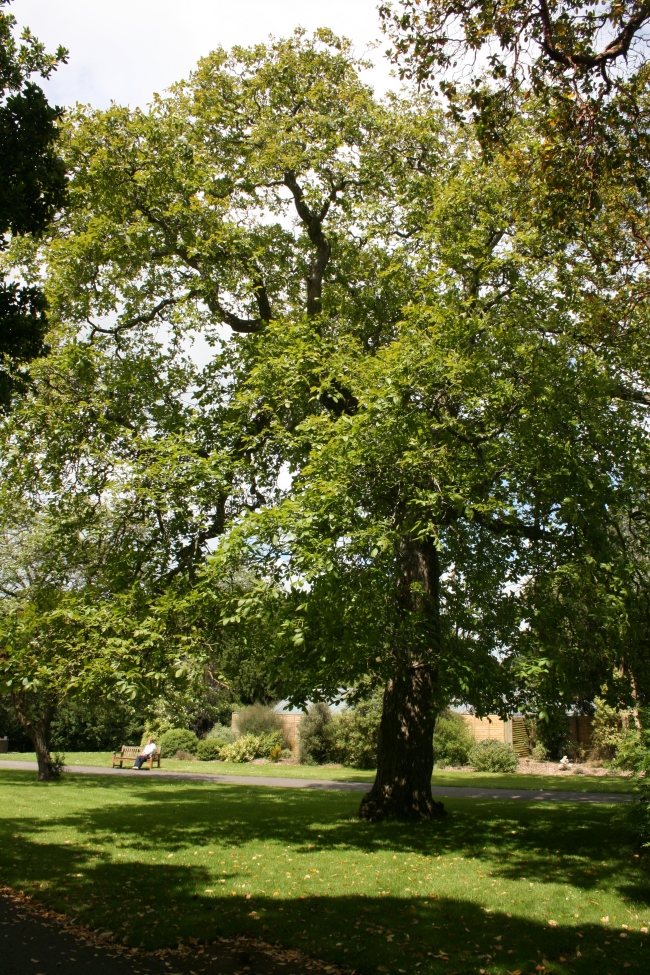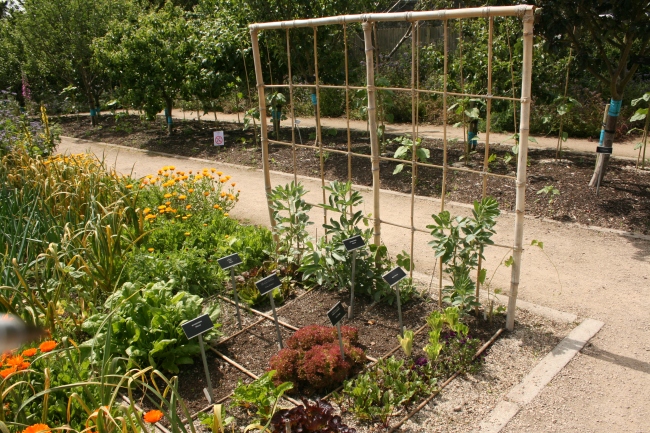On monday I headed up to the Bots in search of a Peruvian Walnut tree (juglans regia). It’s quite a difficult tree to find in Ireland. There is a 250 year old example, St Maelruan’s tree located at St Marys Priory out in Tallaght behind gates but unfortunately my phone calls were not returned. In U.C.D. there was a small grove located near the engineering building but these are supposed to have been relocated to the grounds of the Nova building to facilitate building works. I was unable to locate these on the ground. There are two walnuts located behind the great palm house at the Bots.
The leaves are compound in opposite pairs usually 7 leaflets untoothed with the basal pair much smaller.
Walnuts in 3’s forming.
The bark of a young Juglans regia var. rubra with a diamond pattern in the Arboretum
The bots has over 17000 species of plant so I spent the day taking a look at a few other plants. The pictures are of a teasel (Dipsacus spp) located at the back of the vegetabe garden.
I had read recently in Usbornes pocket naturalist (a great little book) about how the varied mechanisms plants use to ensure the correct pollinators are allowed to access the flowers. Teasel has cupped leaves which trap water around its stem.This stops ants from climbing it and it was nice to see this feature.
The vegetable garden is divided into 4 quadrants, incorporated within this are areas put to green manure. Below Phacelia tanacetifolia is being grown.
The walled veg garden is managed using Organic principals and there is an abundance of flowers forming edges to beds. Sage (Salvia officinalis) is used widely at the corners of beds as well as Calendula spp.and Borago officinalis seen here.
A take on the square foot gardening ideas of Mel B. using what looks about 18 inches.
These legume support frames are movable when rotating crops. Climbing beans are being grown on this one. There may be some difficulty getting at the crop on the inside if peas are growing.
The apples trees have been underplanted with borage, squash etc. Beneath the cane fruits flowers like naturtiams ramble to create a ground cover and supress weeds. Importantly no bare soil is left uncovered.
Sunken into the ground beside this tree is a green cone digester. This will nourish the surrounding soil. There is a master composter demo area to the rear of the garden.
This herb is feverfew (Tanacetum parthenium) taken to prevent migraine.This can be grown in a pot for home use.
This Verbascum has wonderfully soft and hairy leaves. It bleeds a black substance used for making inks,it is also used for making candles, and its leaves placed in a shoe act as insulation. The most common type is Great Mullein (V. thapsus) but this is more of a ‘weed’ as it spreads readily.We have a volunteer Verbascum growing out of gravel in the glasshouse.
The distinct leaves of Liriodendron tulipifera. near the Tolka river.The wood can be used for cabinet making.The mature tree is a a bit tall for flower appreciation.
The lovely poached egg plant limnanthes douglasii used beneath fruit such as gooseberries to bring in the pollinators.
The recently constructed Teagasc college of Amenity Horticulture seen here with the vatican 2 church designed by Liam McCormick in the background. The met office round the corner is also by Liam. The church is designed with wonderful light behind the alter and the met office looks to the sky reflecting the use of the building. What does this building say to the Horticultural student about the relationship between man and nature? For me as an Architect its talks about , heirarchy and student and teacher separation, modularity and control and implies mastery over the environment. The funny thing is a few years ago I designed like this myself as this is how Architects are trained to design. The student Architect has hardly time to sleep or eat for the production based nature of the work never mind spend hours looking carefully at the world around us in which we design such that it might inform that process. It takes time to develope a genuine interest in the natural world as little emphasis is placed on it in our school systems.Many people will go through life with a deep unexplainable sadness that something is missing , yet not have the first clue as to where the roots of this sadness are buried. There is much to learn and Architects could be doing a lot more to help us reconnect.

















